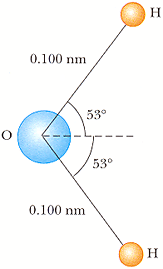- Joined
- Mar 31, 2005
- Messages
- 604
- Reaction score
- 0
I'm somewhat baffled at this problem, I'm not quite sure how to start this off. But its really interesting this time, its health related! Could someone point me towards the right direction? Thanks!
In research in cardiology and exercise physiology, it is often important to know the mass of blood pumped by a person's heart in one stroke. This information can be obtained by means of a ballistocardiograph. The instrument works as follows: The subject lies on a horizontal pallet floating on a film of air. Friction on the pallet is neglibible. Initially, the momentum of the system is zero. When the heart beats, it expels a mass m of blood into the aorta with speed v, and the body and platform move in the opposite direction with speed V. The speed of the blood can be determined independently (for example, by observing an ultrasound Doppler shift). Assume that the blood's speed is 55.0 cm/s in one typical trial. The mass of the subject plus the pallet is 54.0 kg. The pallet moves 5.55 10-5 m in 0.160 s after one heartbeat. Calculate the mass of blood that leaves the heart. Assume that the mass of blood is negligible compared with the total mass of the person. This simplified example illustrates the principle of ballistocardiography, but in practice a more sophisticated model of heart function is used.
In research in cardiology and exercise physiology, it is often important to know the mass of blood pumped by a person's heart in one stroke. This information can be obtained by means of a ballistocardiograph. The instrument works as follows: The subject lies on a horizontal pallet floating on a film of air. Friction on the pallet is neglibible. Initially, the momentum of the system is zero. When the heart beats, it expels a mass m of blood into the aorta with speed v, and the body and platform move in the opposite direction with speed V. The speed of the blood can be determined independently (for example, by observing an ultrasound Doppler shift). Assume that the blood's speed is 55.0 cm/s in one typical trial. The mass of the subject plus the pallet is 54.0 kg. The pallet moves 5.55 10-5 m in 0.160 s after one heartbeat. Calculate the mass of blood that leaves the heart. Assume that the mass of blood is negligible compared with the total mass of the person. This simplified example illustrates the principle of ballistocardiography, but in practice a more sophisticated model of heart function is used.

